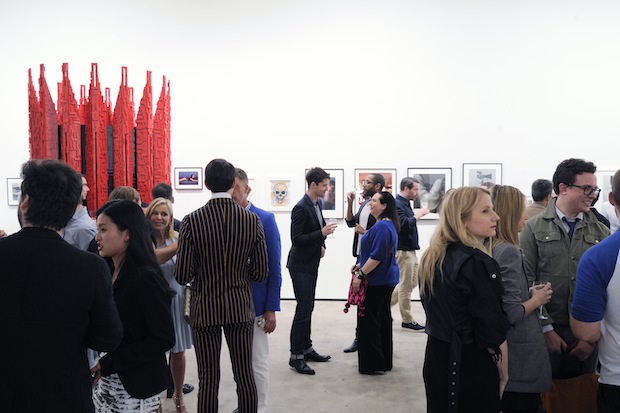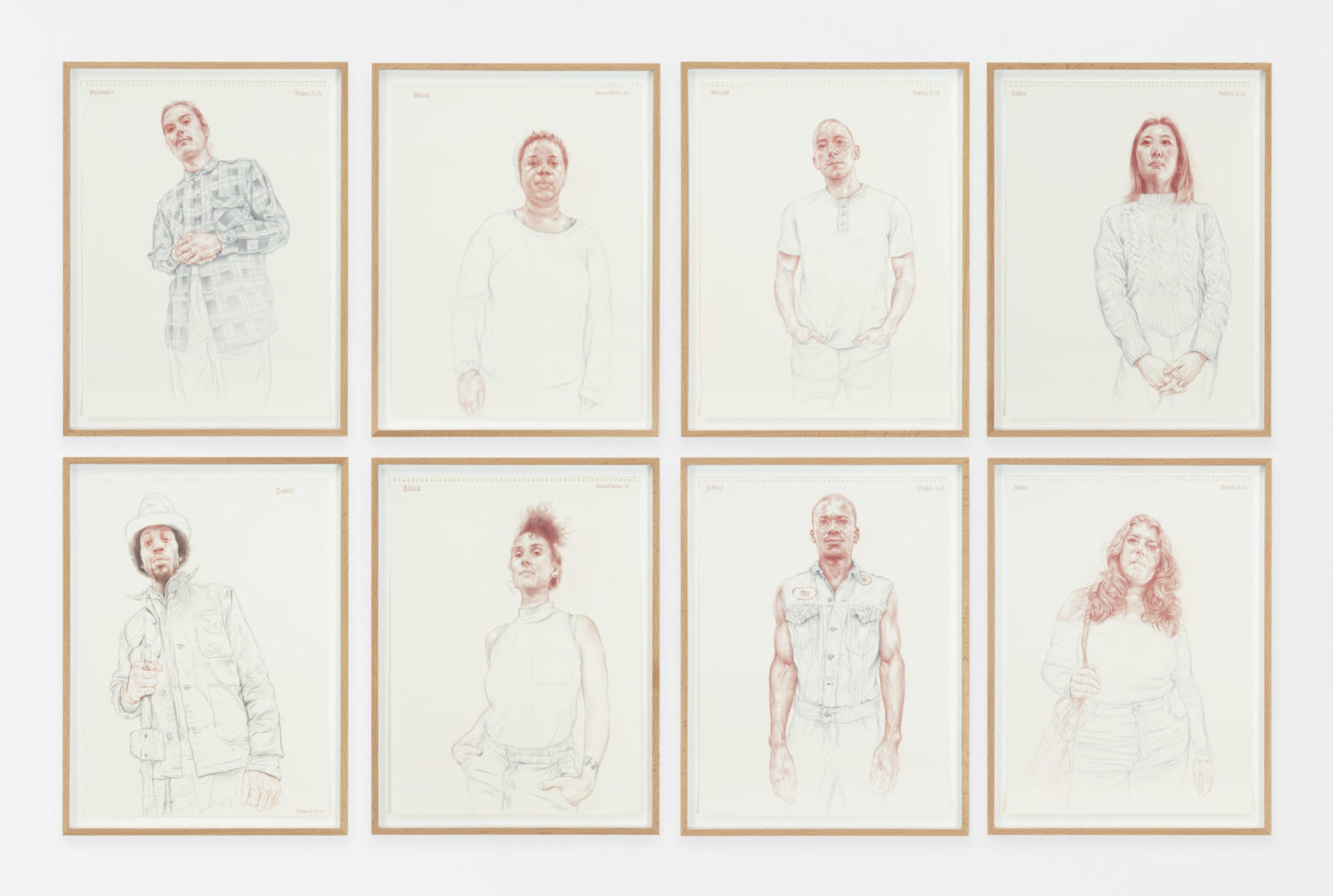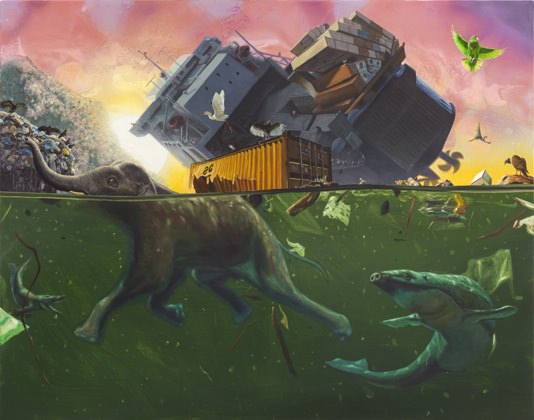Shinique Smith is bundled and waving me in from the train station looking every bit the happy tour guide as she welcomes me into her new home base of Hudson, NY. In the midst of her studio lie the remains of her latest exhibition, Bold as Love, on view at James Cohan Gallery through March 16.
Currently, the artist is preparing for an upcoming show with the Museum of Fine Arts in Boston, as well as working to produce a public work for the MTA that will span 6,672 square feet of space.
Whitewall sat down with Smith to discuss her latest show, her inspirations, and plans for herself and work.
WHITEWALL: Can you talk about your process?
SHINIQUE SMITH: My process is ritualistic. I don’t want to depict a spiritual moment I want to have one. By rituals, I the mean collecting, the going to the thrift store and picking color, the organizing of stripes with stripes and paisley with paisley–there’s a constant collecting of matter that goes along with the things that I’ve consumed. The act of tying and knotting is very basic and the forms that they take are how I can tie them up. I try to differentiate and add new elements but there’s a point where you can’t think anymore, it’s just action. There there’s looking. In this show, looking at mandalas was a ritual. If I ever get lost in what I do, I always return to drawing.
WW: Do you have favorite works? Are they like your children? Does separation anxiety ever kick in?
SS: No, I think of the process as a kind-of birthing, but it’s different. When I was younger I used to think of them as my babies and feel more attached. It’s not that I’m detached from them now, but I think that work loses energy when you hide it away. It becomes art or it becomes full from the experience of others looking at it and having an exchange. If I keep things in storage, then they would lose their energy. I keep a couple pieces to myself for sentimental value.
WW: You’re known for your bales, but the forms in your latest exhibition seem to take on a more human form, is that deliberate?
SS: Sometimes. I don’t like to create something from a sense of obligation. If a figure comes up [in my work], I’m not going to say ‘I don’t do that’ and dismiss it. I want to allow things to become, and particular works in the show were built off my clothing like the work pants I busted up making the shows. There’s this presence of body with my hand and how I’ve put things together with rope and ribbon, like the act of tying. [Tying is] very physical and the gesture is a remnant of my body for better or worse. I’ve used my body to make marks in this show. My body is present and you can’t get away from that.
WW: Why the title, “Bold as Love?”
SS: I was listening to some Jimi [Hendrix], but it was less about the song and more about the sentence. I was also reading a lot of Rumi and using some Rumi text to generate some of the paintings, and they’re all about a very deep love. [The title emphasizes] love that has no question and expects no answer. It’s beyond the romantic depictions or illustrations of what love is.
WW: You were commissioned by the MTA to do a public work at the Mother Clara Hale Bus Depot in Harlem that’s going to be over 6,000 square feet. Does the scale of your public work change the manner in which you approach your gallery work?
SS: No. Because I try to play with scale. Even though most of the works in this show are large, I do play with it because I think it forces you to think about space differently. If you do something really small [it allows you to] see how it relates to larger works. I haven’t seen it finished yet so I have no reference as to how it’s going to impact my work. The piece I made that’s being translated is really small. The process of it is like a collage and the way they’re putting it together is the way I put it together, they’re creating that collage element. Seeing every stone and tile and glass makes me want to work more with that material. The possibilities of mosaics and painting on glass hadn’t really come into my realm and it has a different relationship to light, so I do want to work with those materials some more and see where they’ll go.
WW: What are your future plans, where do you see your work going?
SS: I think I’m at my best when I’m doing multiple things at once. The future is hopefully… more. I have some canvases of blank stuff that weren’t finished for the show and I think I’ll just pick up where I left off. I know I want to make another detail of a bundle with no space around it enveloped in fabric. We’ll see about the glass and the mosaics…just more! Hopefully, my work will become even more rigorous and deeper as I continue to grow. I would get bored if I made the same painting over and over again in different ways.
Shinique Smith was born and raised in Baltimore, Maryland. Her influences include a plethora of artists like Fred Tomaselli, Sherman Alexie, Chris Ofili, Joan Mitchell, Agnes Martin, and Marcel Duchamp. Smith works in mediums including painting, sculpture, and drawing. Her works attempt to showcase the spiritual interconnectedness of individuals using recycled consumptive materials.
Shinique Smith has exhibited with The New Museum, MoMA/PS1, Deutsche Guggenheim, Corcoran Gallery of Art and National Portrait Gallery. Her work is included in the collections of Brooklyn Museum, Studio Museum in Harlem, Los Angeles County Museum of Art, and the Whitney Museum.
She lives and works in Hudson, NY.










